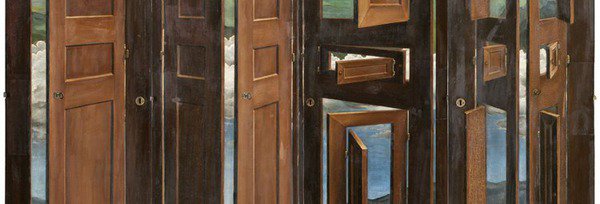Trompe- l'oeil
dal 1/2/2012 al 1/11/2012
Segnalato da
1/2/2012
Trompe- l'oeil
Musee des Arts Decoratifs, Paris
Imitations, pastiches et autres illusions. On view works from Musee's storerooms based on the technique of Trompe l'oeil. As its name indicates, is meant to trick the eye, and originated in painting, in which the illusion created by a painted object relies heavily on perspective and chiaroscuro.

In the Musée des Arts Décoratifs’ Study Gallery the public can discover the wealth of its collections via selections of rarely or never previously shown works from its storerooms, shown for an 18-month period. Trompe-l’oeil, as its name indicates, is meant to trick the eye, and originated in painting, in which the illusion created by a painted object relies heavily on perspective and chiaroscuro.
In decorative art, this ‘trickery of the eye’ took very diverse forms. Wallpapers, for instance, proved ideal for this form of expression. From the most modest to the most sumptuous, they all imitate materials: wood, lacquer, tiles, straw, velvet, and even framed pictures. Many imitations were of course done for economic reasons, and in this game of substitutes, one sees that for centuries many materials have been imitated by others: marbled ceramics imitating jasper, glazed ceramics imitating porphyry or gold, paste imitating the diamond, linoleum floorboards, and so on. This game of illusions evolved in the 19th century, when, historicism oblige, it was not only materials that were imitated but motifs too. Owen Jones’ famous The Grammar of Ornament, like its French equivalent, Albert Racinet’s l’Ornement polychrome, provided numerous medieval and Moorish motifs for 19th-century creators.
Fashion was no exception and became the theatre of the most outrageous illusions. In the 18th and 19th centuries, wigs, tournures and faux-cul were worn to give false impressions. In the 20th century, illusion focussed less on form than on the fabric itself, with the appearance of false wears and tears, false pockets, false buttons, etc. Like a treasure hunt traversing centuries and materials, this exhibition invites us into the great game of illusion or the ‘vertigo of imitation’.
Image: Armoire surrealiste, Marcel Jean, France 1941
Musee des Arts Decoratifs
107 rue de Rivol - Paris
Hours: Tues-Sun 11-6pm, Thurs:11-9pm
Admission: 9,50 € , concessions 8 €



